Abstract
Published studies of the relation between type of building ventilation system and work-related symptom prevalence in office workers have been contradictory. A reanalysis was performed of six studies meeting specific eligibility criteria, combining published data with unpublished information obtained from study authors. Five eligible studies were from the United Kingdom, and one was from Denmark. Standardized categories of building ventilation type were created to allow comparison of effects across studies. Within each study, prevalence odds ratios (PORs) were calculated for symptoms in each ventilation category relative to a baseline category of naturally ventilated buildings. Air-conditioned buildings were consistently associated with increased prevalence of work-related headache (POR = 1.3-3.1), lethargy (POR = 1.4-5.1), and upper respiratory/mucus membrane symptoms (POR = 1.3-4.8). Humidification was not a necessary factor for the higher symptom prevalence associated with air-conditioning. Mechanical ventilation without air-conditioning was not associated with higher symptom prevalence. The consistent associations found between type of building ventilation and reported symptom prevalence have potentially important public health and economic implications.
Full text
PDF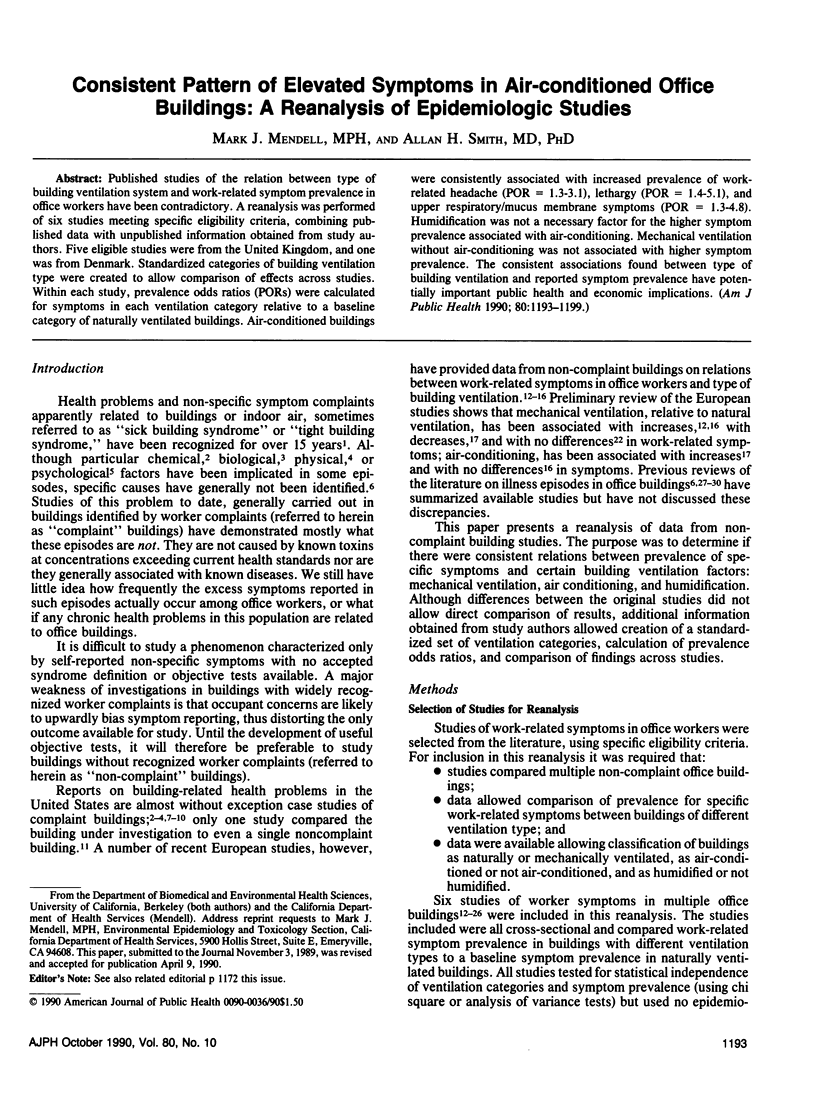
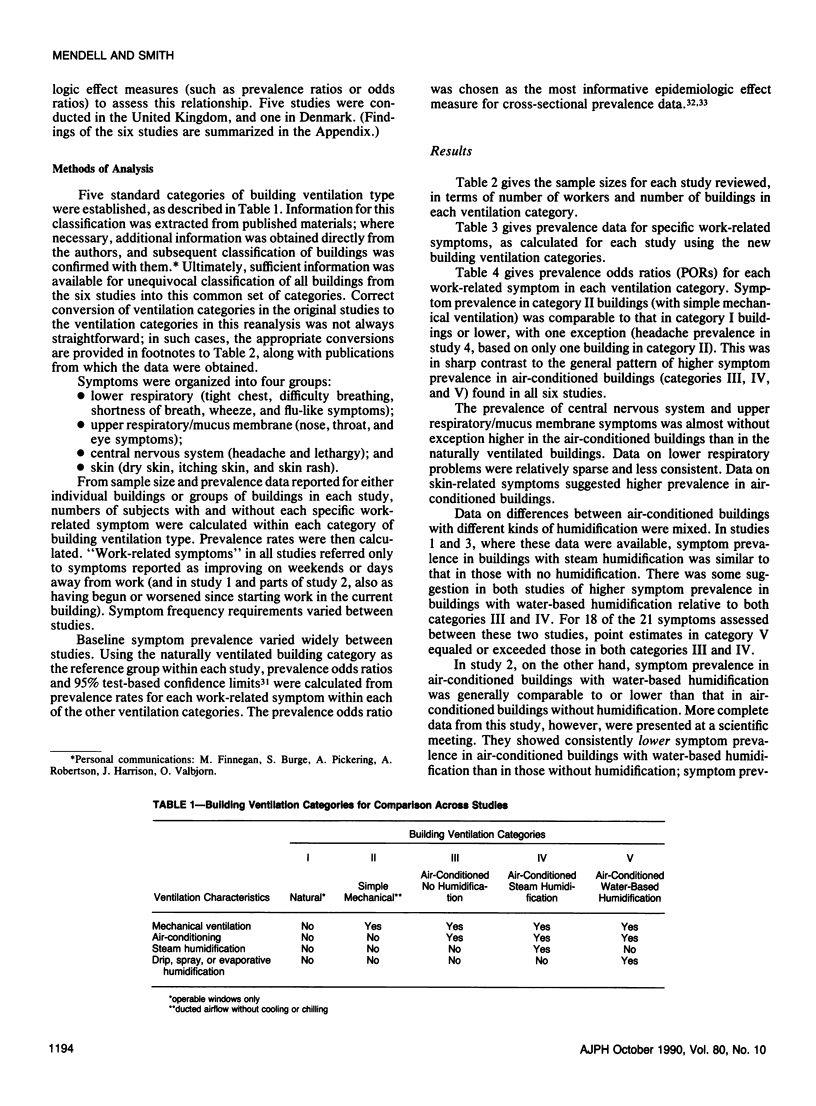
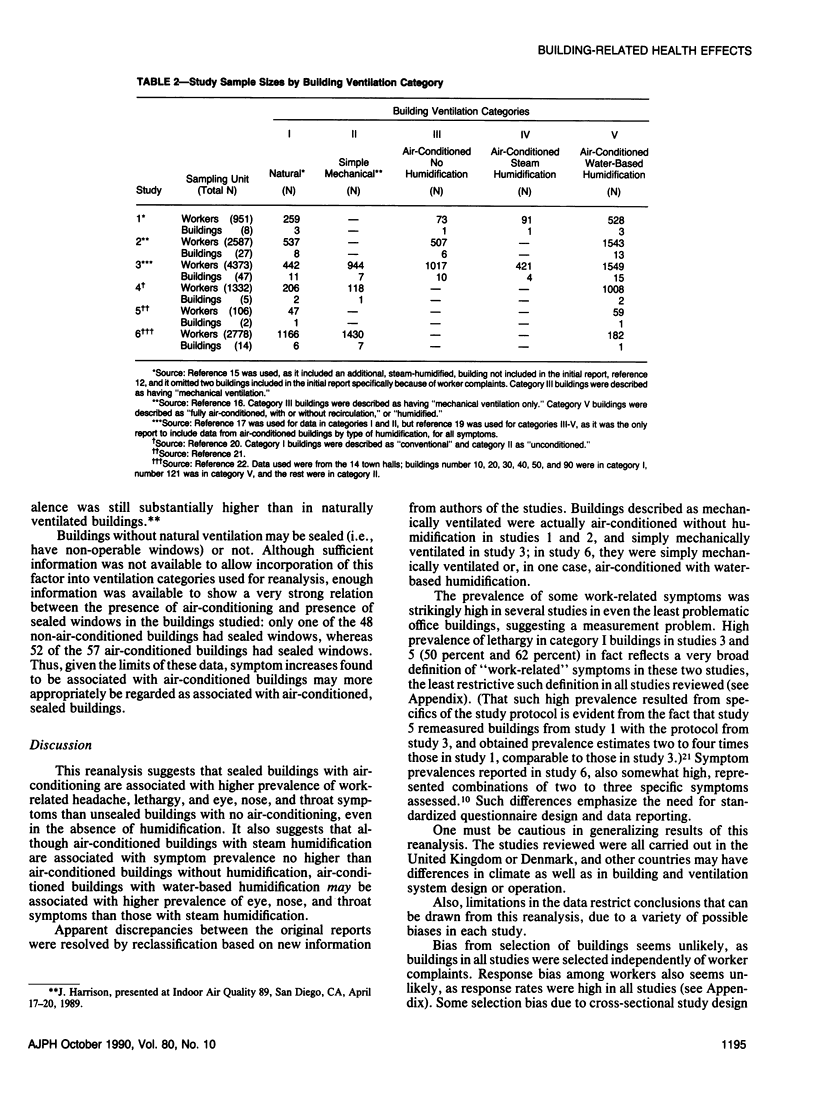
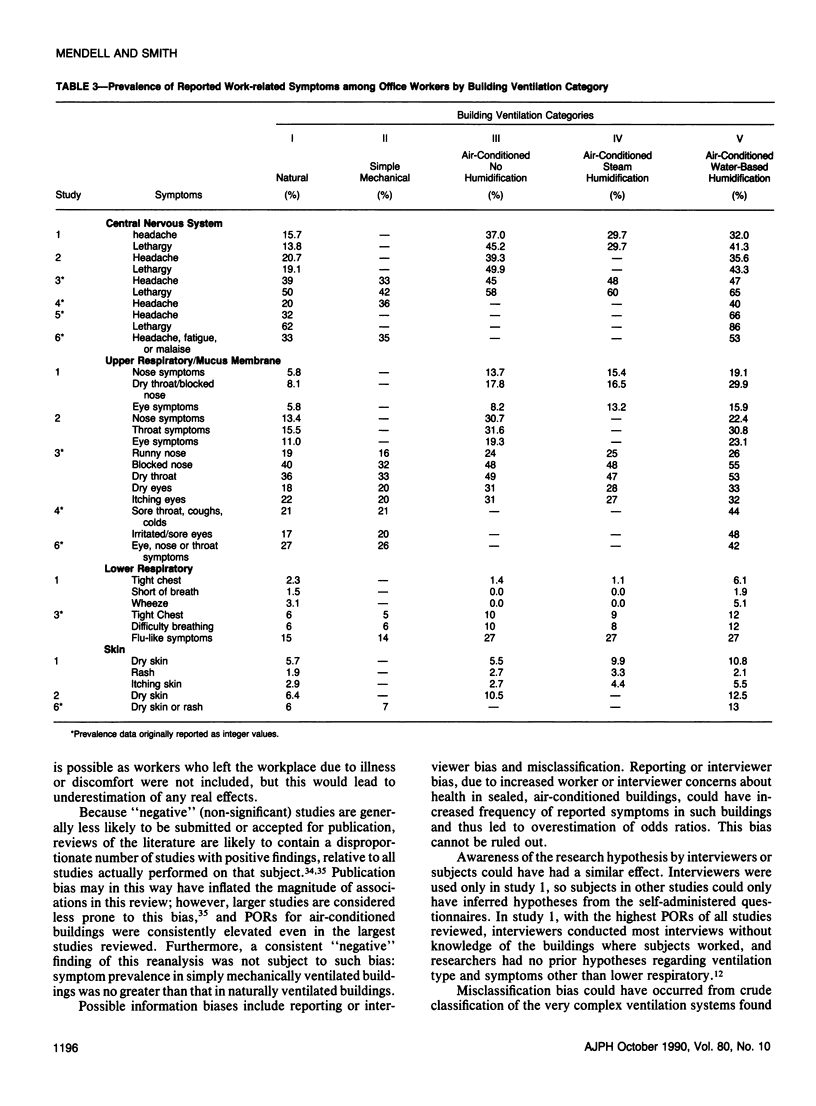
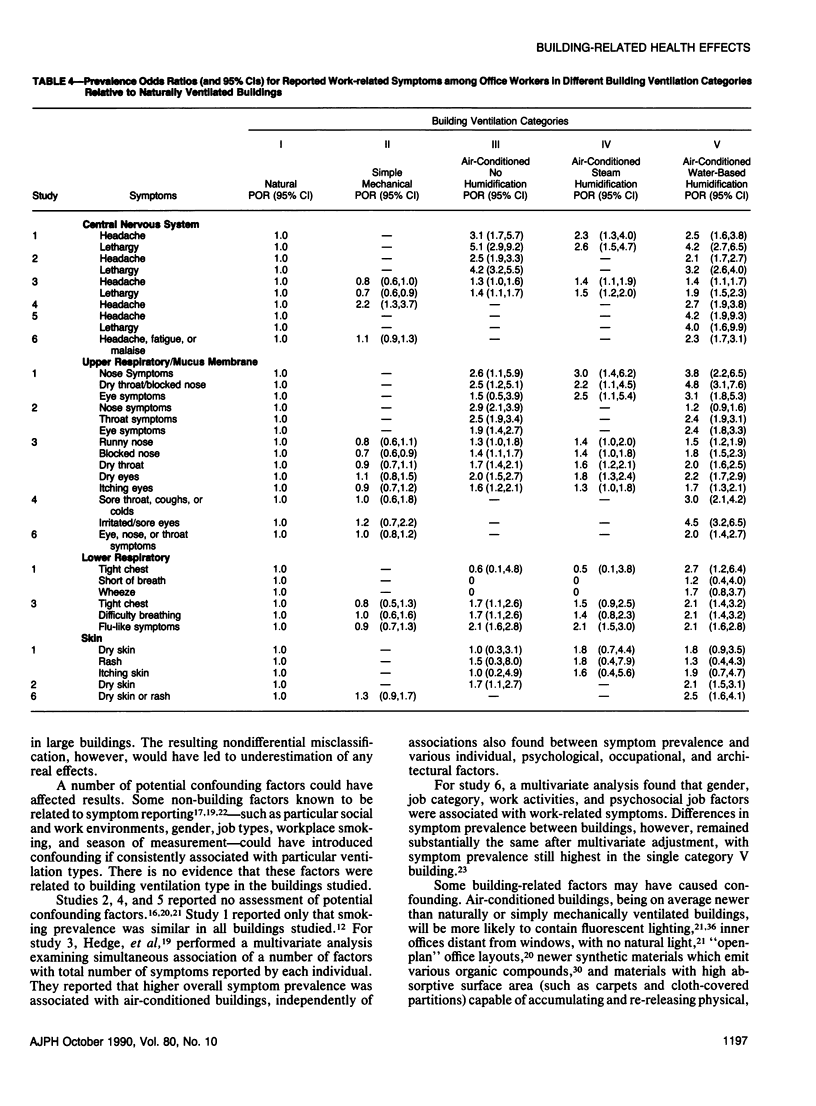
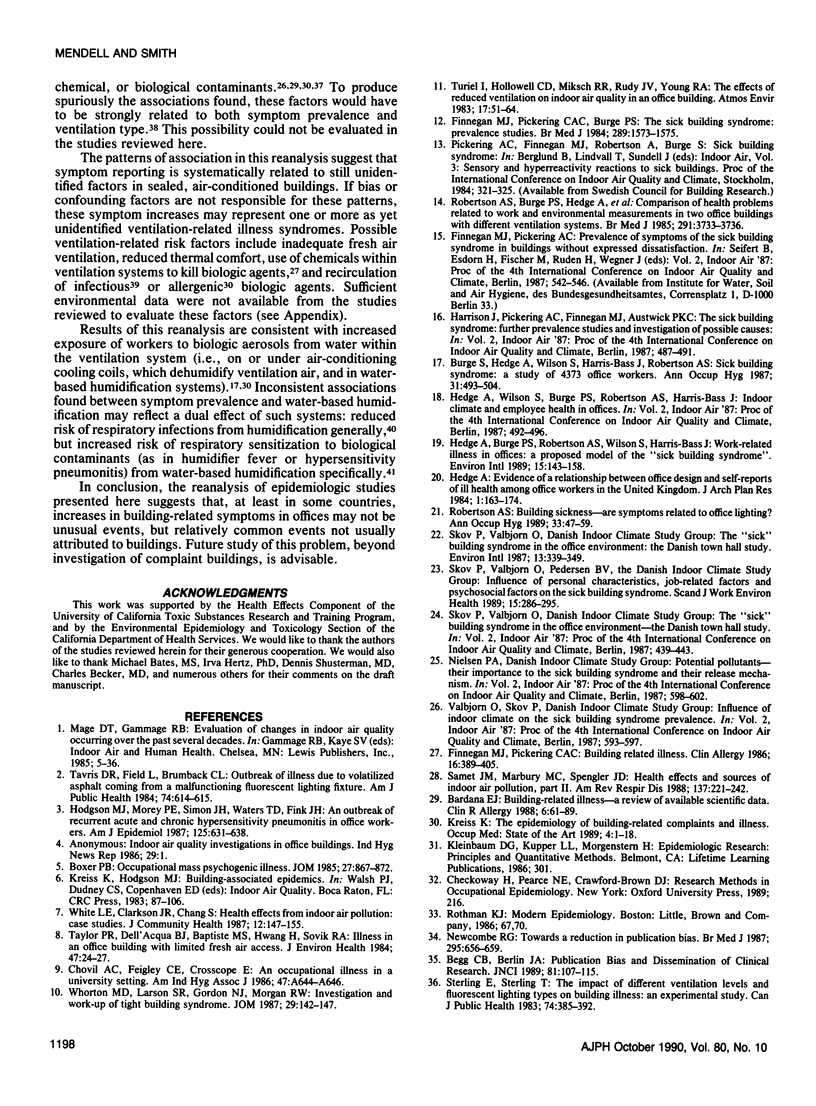
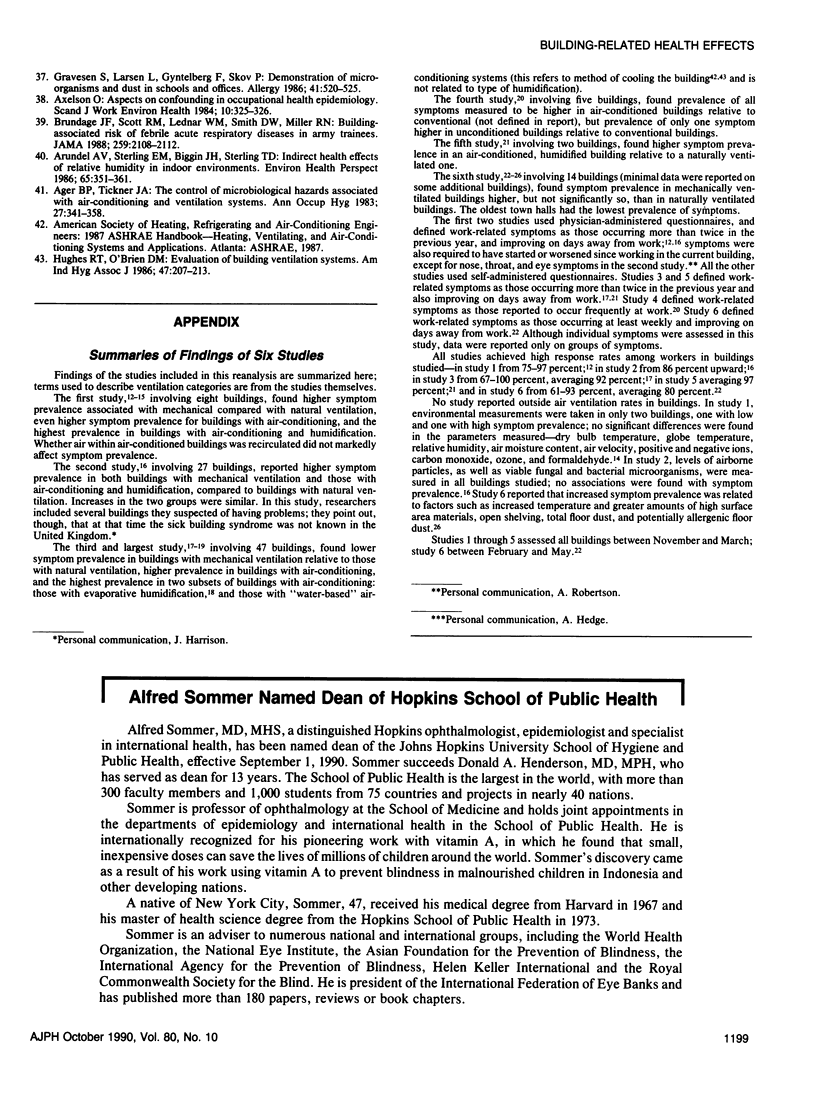
Selected References
These references are in PubMed. This may not be the complete list of references from this article.
- Ager B. P., Tickner J. A. The control of microbiological hazards associated with air-conditioning and ventilation systems. Ann Occup Hyg. 1983;27(4):341–358. doi: 10.1093/annhyg/27.4.341. [DOI] [PubMed] [Google Scholar]
- Arundel A. V., Sterling E. M., Biggin J. H., Sterling T. D. Indirect health effects of relative humidity in indoor environments. Environ Health Perspect. 1986 Mar;65:351–361. doi: 10.1289/ehp.8665351. [DOI] [PMC free article] [PubMed] [Google Scholar]
- Asp S. Confounding by variable smoking habits in different occupational groups. Scand J Work Environ Health. 1984 Oct;10(5):325–326. doi: 10.5271/sjweh.2321. [DOI] [PubMed] [Google Scholar]
- Bardana E. J., Jr, Montanaro A., O'Hollaren M. T. Building-related illness. A review of available scientific data. Clin Rev Allergy. 1988 Spring;6(1):61–89. [PubMed] [Google Scholar]
- Begg C. B., Berlin J. A. Publication bias and dissemination of clinical research. J Natl Cancer Inst. 1989 Jan 18;81(2):107–115. doi: 10.1093/jnci/81.2.107. [DOI] [PubMed] [Google Scholar]
- Boxer P. A. Occupational mass psychogenic illness. History, prevention, and management. J Occup Med. 1985 Dec;27(12):867–872. [PubMed] [Google Scholar]
- Brundage J. F., Scott R. M., Lednar W. M., Smith D. W., Miller R. N. Building-associated risk of febrile acute respiratory diseases in Army trainees. JAMA. 1988 Apr 8;259(14):2108–2112. [PubMed] [Google Scholar]
- Burge S., Hedge A., Wilson S., Bass J. H., Robertson A. Sick building syndrome: a study of 4373 office workers. Ann Occup Hyg. 1987;31(4A):493–504. doi: 10.1093/annhyg/31.4a.493. [DOI] [PubMed] [Google Scholar]
- Finnegan M. J., Pickering C. A. Building related illness. Clin Allergy. 1986 Sep;16(5):389–405. doi: 10.1111/j.1365-2222.1986.tb01974.x. [DOI] [PubMed] [Google Scholar]
- Finnegan M. J., Pickering C. A., Burge P. S. The sick building syndrome: prevalence studies. Br Med J (Clin Res Ed) 1984 Dec 8;289(6458):1573–1575. doi: 10.1136/bmj.289.6458.1573. [DOI] [PMC free article] [PubMed] [Google Scholar]
- Gravesen S., Larsen L., Gyntelberg F., Skov P. Demonstration of microorganisms and dust in schools and offices. An observational study of non-industrial buildings. Allergy. 1986 Sep;41(7):520–525. doi: 10.1111/j.1398-9995.1986.tb00337.x. [DOI] [PubMed] [Google Scholar]
- Hodgson M. J., Morey P. R., Simon J. S., Waters T. D., Fink J. N. An outbreak of recurrent acute and chronic hypersensitivity pneumonitis in office workers. Am J Epidemiol. 1987 Apr;125(4):631–638. doi: 10.1093/oxfordjournals.aje.a114576. [DOI] [PubMed] [Google Scholar]
- Hughes R. T., O'Brien D. M. Evaluation of building ventilation systems. Am Ind Hyg Assoc J. 1986 Apr;47(4):207–213. doi: 10.1080/15298668691389630. [DOI] [PubMed] [Google Scholar]
- Newcombe R. G. Towards a reduction in publication bias. Br Med J (Clin Res Ed) 1987 Sep 12;295(6599):656–659. doi: 10.1136/bmj.295.6599.656. [DOI] [PMC free article] [PubMed] [Google Scholar]
- Robertson A. S., McInnes M., Glass D., Dalton G., Burge P. S. Building sickness, are symptoms related to the office lighting? Ann Occup Hyg. 1989;33(1):47–59. doi: 10.1093/annhyg/33.1.47. [DOI] [PubMed] [Google Scholar]
- Samet J. M., Marbury M. C., Spengler J. D. Health effects and sources of indoor air pollution. Part II. Am Rev Respir Dis. 1988 Jan;137(1):221–242. doi: 10.1164/ajrccm/137.1.221. [DOI] [PubMed] [Google Scholar]
- Skov P., Valbjørn O., Pedersen B. V. Influence of personal characteristics, job-related factors and psychosocial factors on the sick building syndrome. Danish Indoor Climate Study Group. Scand J Work Environ Health. 1989 Aug;15(4):286–295. doi: 10.5271/sjweh.1851. [DOI] [PubMed] [Google Scholar]
- Sterling E., Sterling T. The impact of different ventilation levels and fluorescent lighting types on building illness: an experimental study. Can J Public Health. 1983 Nov-Dec;74(6):385–392. [PubMed] [Google Scholar]
- Tavris D. R., Field L., Brumback C. L. Outbreak of illness due to volatilized asphalt coming from a malfunctioning fluorescent lighting fixture. Am J Public Health. 1984 Jun;74(6):614–615. doi: 10.2105/ajph.74.6.614. [DOI] [PMC free article] [PubMed] [Google Scholar]
- White L. E., Clarkson J. R., Chang S. N. Health effects from indoor air pollution: case studies. J Community Health. 1987 Summer-Fall;12(2-3):147–155. doi: 10.1007/BF01323476. [DOI] [PubMed] [Google Scholar]
- Whorton M. D., Larson S. R., Gordon N. J., Morgan R. W. Investigation and work-up of tight building syndrome. J Occup Med. 1987 Feb;29(2):142–147. [PubMed] [Google Scholar]


